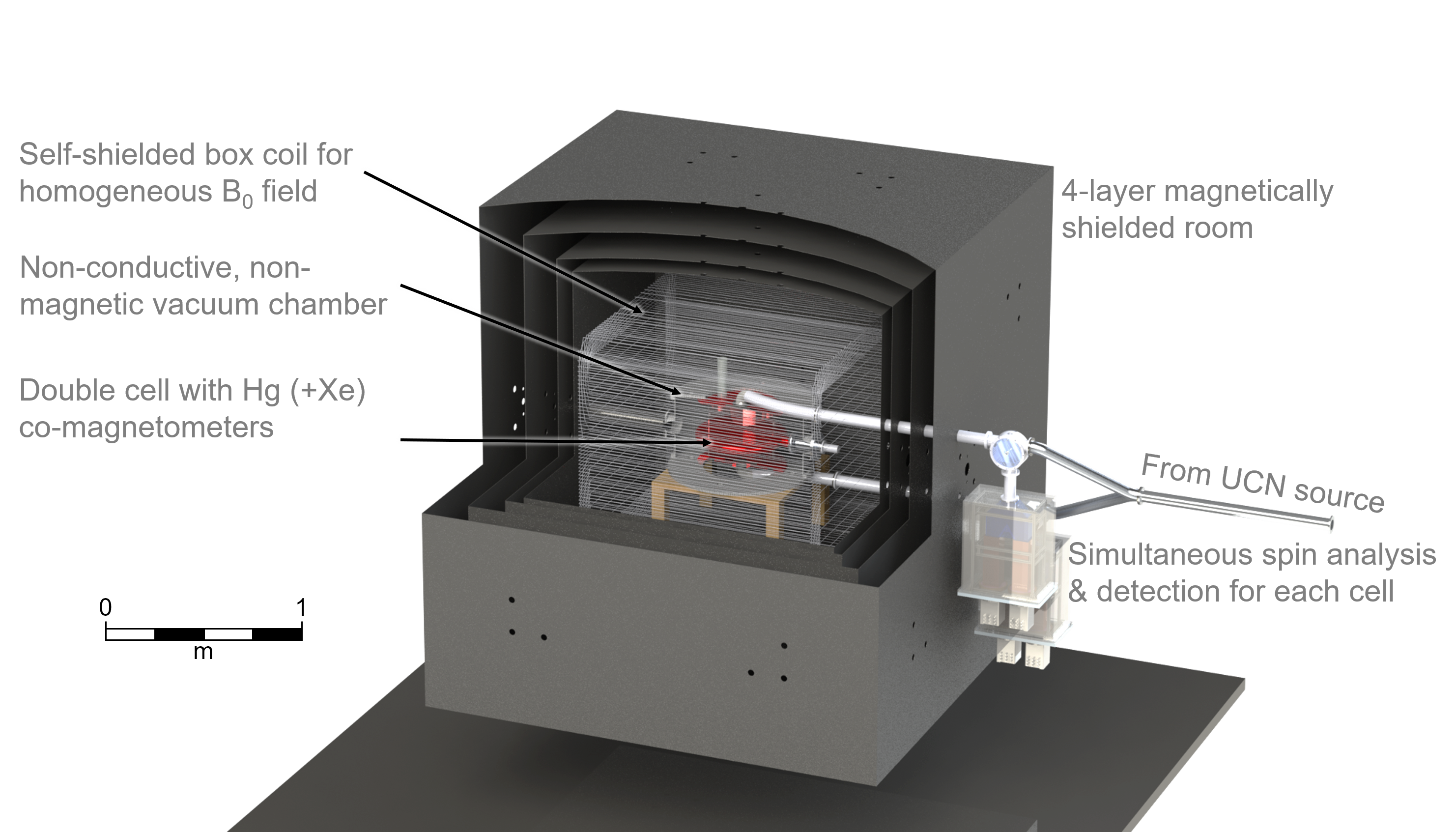The TRIUMF’s UCN facility is designed to be the world’s flagship experimental facility for ultracold neutrons. It’s a project that’s required a decade-long combination of world-leading vision, international collaboration and technical and scientific expertise.
The UCN facility is aiming to be the world’s highest-density source of ultracold neutrons. High density is critical to the research because most ultracold neutron experiments are statistics limited—the experiments require enormous numbers of individual measurements to arrive at a statistically reliable result.

Creating ultracold neutrons requires first creating a high number of fast neutrons and then using sophisticated cryogenic techniques to slow them down to ultracold. (Temperature is a measurement of how quickly particles are moving.)
In nature, neutrons are usually bound within atomic nuclei. So, the first UCN step is to create free neutrons. Based in TRIUMF’s Meson Hall, the UCN facility uses a new, dedicated beamline of high-energy (480 MeV) protons produced by TRIUMF’s main cyclotron fired into a block of tungsten to produce a stream of free neutrons.
Tungsten is used because it’s neutron-rich, each nucleus contains 74 protons and, on average, 110 neutrons. The cyclotron-produced protons hit and shatter the tungsten nuclei, breaking them up into smaller pieces, including large numbers of fast neutrons.
To slow the neutrons to ultracold is a complex three-step process, the first two of which are forms of thermal cooling in which the neutrons are slowed the way billiard balls would be by hitting other objects, in the neutrons’ case, nuclei.
To start, the fast neutrons spewed from the tungsten target are sent through room- temperature heavy water cooling them to about 300 K (27°C). Next, the neutrons are sent through frozen heavy water, or liquid deuterium, cooling the neutrons down to about 20 K (-253°C).
However, this still isn’t cold enough for TRIUMF’s neutron experiments. The third and final stage involves a more complex, quantum mechanically-mediated form of cooling. The cold neutrons are immersed in superfluid helium at about 0.9 K. Here, through quantum mechanical interactions, the neutrons emit phonons, a variety of quasi-particle analogous to a sound wave, losing energy in the process. This creates ultracold neutrons at about 0.003 K (-273.15 °C).
From fast neutrons emerging from the tungsten target at more than 10,000 kilometers-per-second, the three-step cooling slows them to less than 8-meters per second, or about the speed of an Olympic 100-meter sprinter.
The ultracold neutrons are now ready to be studied. They are shuttled to the electric dipole measurement container, or cell, where they’re held for about 100 seconds, and EDM measurements are made. A door valve on the EDM cell then opens, and the neutrons are directed into a detector.
Given the extremely small size of any expected nEDM, it will take several years of measurements, data analysis and research to arrive at a reliable measurement that overcomes inherent measurement limits and errors.
